Indicating, but not turning – accident/crash
Who is at fault if a car signals but doesn’t turn? It’s a great question, and I don’t have an amazing answer. But I can tell you that from a legal standpoint, turn signals definitely don’t give other drivers any right to make assumptions.
In other words, it may be the fault of the driver who indicated but didn’t turn, the other road user(s), or a combination of both; but more often than not, the fault is decided based on the driving laws, and the traffic control devices at the scene; not so much about turn signals.
Turn signals are nice, and we are supposed to always use them when we drive, but at the time time, we are not allowed to trust them. We are not allowed to assume that a car is going to go where it says it’s going to go. I know, it’s a bad deal, isn’t it?
I am not a traffic officer, police, lawyer, ICBC adjuster, or anything like that. But I can answer this question from my perspective as a driving instructor.
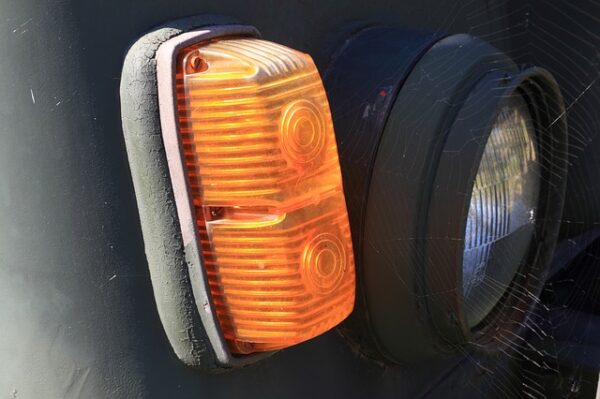
The Laws on Turn Signals
The funny thing is, the law says that we must always use our turn signals. But it doesn’t say that once a vehicle has signalled, other drivers can make an assumption about where it will go.
The law only says the usual stuff, the stuff that we all know about, such as:
- A driver at a stop sign must yield to another driver who isn’t facing a stop sign
- A driver at a red light must yield to a driver that is facing a green light (i.e. right turn on the red light)
- A driver who is turning left at a green light must yield to an oncoming driver who is turning right
Traffic laws do not indicate anything about how a turn signal can be your guarantee to take the right of way
Here’s a simplified example of how these sorts of things may happen.
If these vehicles are actually turning left simultaneously, well that’s fine
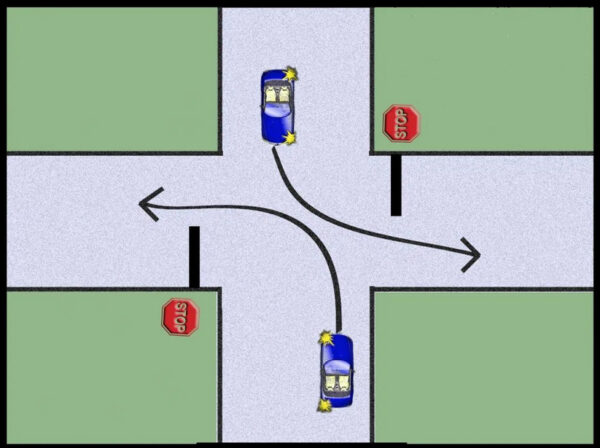
But if one of them isn’t actually turning, well that’s a collision
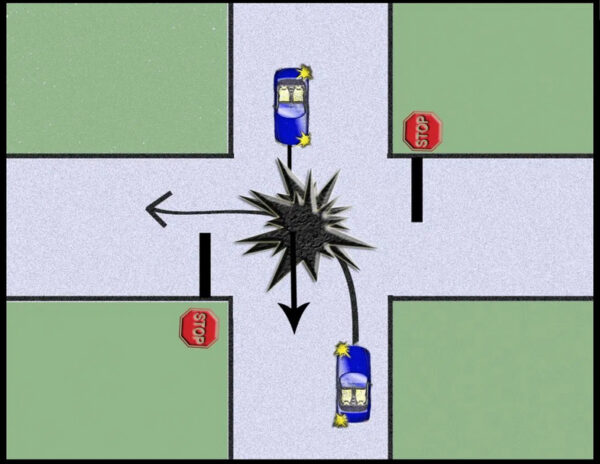
In the following example, Car 1 is signalling for a right turn, but it is not actually going to turn right
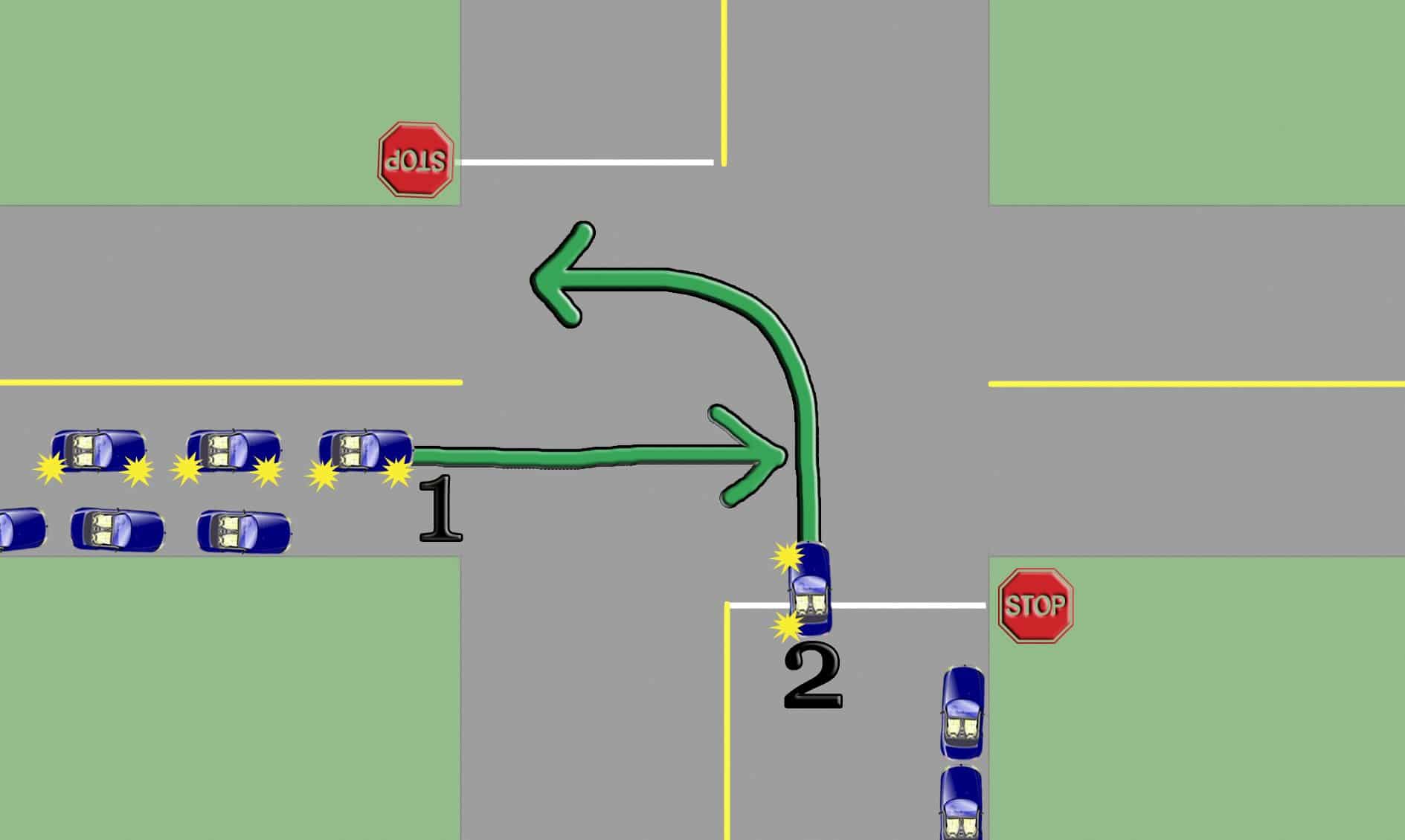
Whenever I was teaching driving lessons, I would always try to encourage avoiding thinking of things in terms of “Who’s fault would it be?” or “Who is at fault?” But rather, “What can I do as a driver at the moment to avoid this potential crash?”
We must learn more about defensive driving, and preventing collisions before they happen in the first place. Then, no one has to deal with the aftermath.
Remember that turn signals are little light bulbs that can burn out, too. Sometimes a car will turn without any signal; sometimes that driver has no idea.
What ICBC Says about Who is at Fault
I’m not sure how they do it in different parts of the world, but here are a few crash examples from the ICBC website.
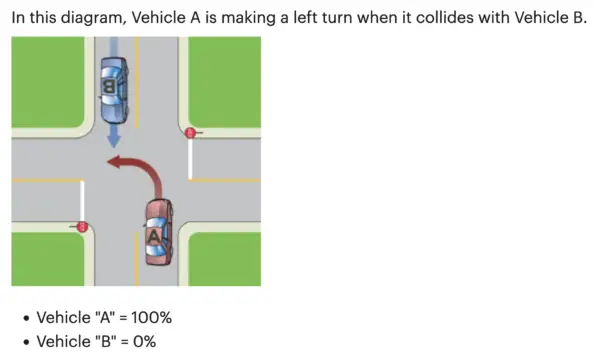
The rules of the road – who is at fault?
Drivers making a left turn must yield to oncoming traffic that is close enough to constitute an immediate hazard. Therefore, the driver of Vehicle A would be found 100% responsible.
ICBC CRASH EXAMPLE – LEFT TURN
Check out a bunch of more ICBC crash examples and who would be at fault.
Reading Court Cases Online for Who is at Fault
Illegal Right Turn Example
If reading court cases online is your thing, well there are plenty. I will go through a few examples here. They may not be exactly about turn signals like we are talking about, but you can definitely get the idea of who will be at fault for certain things.
In this case, a bicyclist and a car collided when a car was signalling for a right turn (that happened to be illegal) and the bicycle assumed that the car had forgotten to cancel the signal because the turn was illegal. But the car did turn right, and they did have a collision. Who is at fault? 100% The car that did the illegal right turn.
Read the case: Long v. Thanas (2019)
A Four-Way Stop Sign Collision
In this case, a collision occurred at a four-way stop. One driver stopped and looked both ways. The driver saw a car approaching but thought it looked like a car driving at a normal speed. The driver assumed that the other car would stop. But the other car didn’t stop, and there was a collision. Who is at fault? 100% of the car didn’t stop at the stop sign.
Read the case: Kim v. Dresser (2001)
Do You Have to Signal In a Turning Lane?
Yes, legally we drivers must still signal when we are turning in a turning lane. It might be obvious to you or me that we are turning, but remember that intersections are the #1 most common place where collisions occur.
And that’s because it’s a place where many different road users (like all of them) converge in a tiny area, all wanting to go in different directions. It is legally required and would be helpful to still signal while in a turning lane in case there are other road users – especially those who don’t drive – that may not be sure where you’re intending to go. It might be obvious to you but not to others.
Conclusion
Who is at fault if a car signals but doesn’t turn? I can’t really answer that question because it depends on the situation, traffic control devices, and a bunch of other factors.
I don’t have that ICBC adjustor experience. ICBC adjustors will always determine who was at fault for each individual case.
What I do know is that the law doesn’t say anything about how turn signals give us the magical right to make assumptions about where cars will go. And when cases go to court, the judge looks at the actual law.
And the law only seems to say who must yield to who, and a whole lot of other stuff like that. But I’ve never seen anything about turn signal assumptions. Even if the fault is shared, or not yours at all, it’s a bad deal to have a crash. We must yield to whoever we must yield to, and whoever doesn’t follow the rules, seems to generally be left with the fault, regardless of signals.
So always try to be a defensive driver, and be patient if you aren’t sure what a car is about to do. It may delay your trip, but how much longer would it take to make sure your turn or driving action is going to be 1000% safe?
Maybe seven more seconds? Even a minute? It’s a lot quicker than you’ll spend the consequences of that crash, I’m sure.
Disclaimer: The information provided on this website does not, and is not intended to, constitute legal advice; instead, all information, content, and materials available on this site are for general informational purposes only. Information on this website may not constitute the most up-to-date legal or other information. This website contains links to other third-party websites. Such links are only for the convenience of the reader, user or browser. My lawyer made me put this here.
Read more:

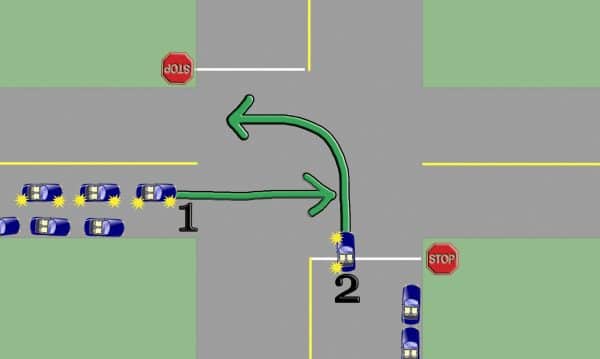


Perhaps if there was a law for people falsely indicating, there would be less collisions due to drivers negligence.. if you falsely indicate and there is a collision then the blame should lie with the false indicator! An accident wouldn’t of happened otherwise…
But how do we write the guidelines for indicating or falsely indicating? What about when there’s a gas station at the corner of an intersection for example? How are people supposed to know if you are planning to turn into the gas station or at the intersection? Is it the right thing to do to avoid the signal completely avoid confusion?
In my estimation, yes it would be the right thing to do to avoid the signal completely to avoid confusion. They person needing to turn can still slow down enough to make the turn and not cause confusion.
The responsibility is placed higher for who behind. People always blame other instead of themselves. That’s what defensive driving is suppose to be about.
So, what that they false indicate? They don’t do it on purpose usually unless they are impaired or just recently turn without remembering to shut off.
Very true I had a car crash yesterday on a double mini roundabout where the other vehicle involved was indicating to turn left and she didnt go left meaning she came straight into the front of my car… now if she wasnt indicating left and using the correct signals then there wouldn’t of been a crash… I’m now left without a car airbag burns up my arm and bad whiplash…
Sorry to hear that
Hi, my son got in a car accident the other day. He was going through an intersection and put on his signal to turn left but then changed his mind and kept going straight. He did turn the signal off right away. Another driver making a left at the intersection across from him assumed he was turning and pulled out and crashed into him. The ICBC adjuster says my son is 100 percent at fault as he did not turn his signal off quick enough and the other driver hit him as he thought he was turning. I never trust other drivers signals and its important to make sure its safe to turn. That is the drivers responsibility. Is there something in the drivers book that its law not to blame the driver with the turning signal. I think this ruling is very unfair. The other driver should take some responsibility as he trusted the signal after it was turned off and pulled out anyway causing the crash. Where can I find information on this so I can see if the Adjuster will do another assessment. thanks
Hi, sorry to hear this. That’s the thing, information that would answer your question from ICBC just doesn’t seem to exist… I really don’t know what the answer is sorry. There is only the motor vehicle act which says which driver “should yield” in different situations.